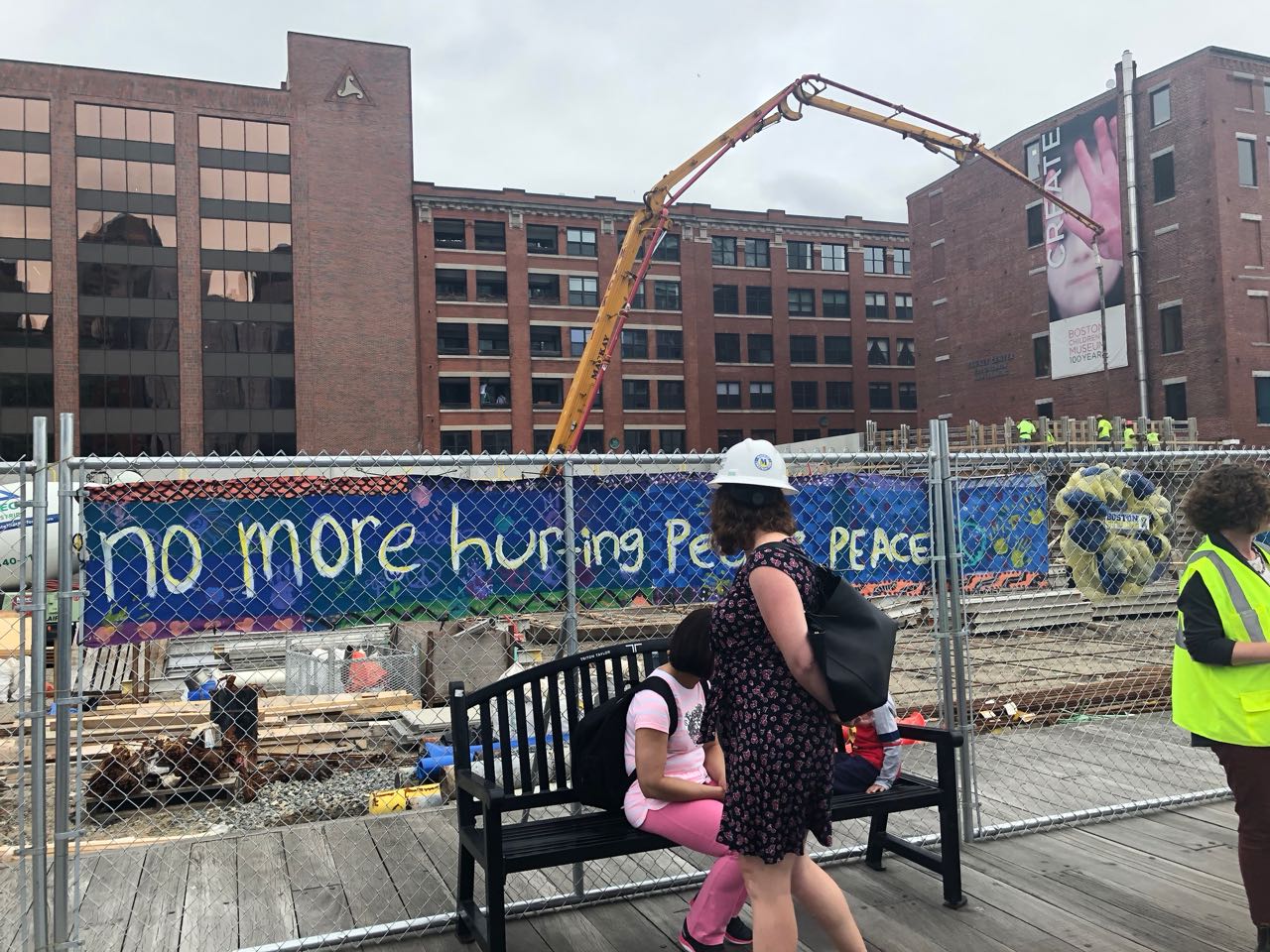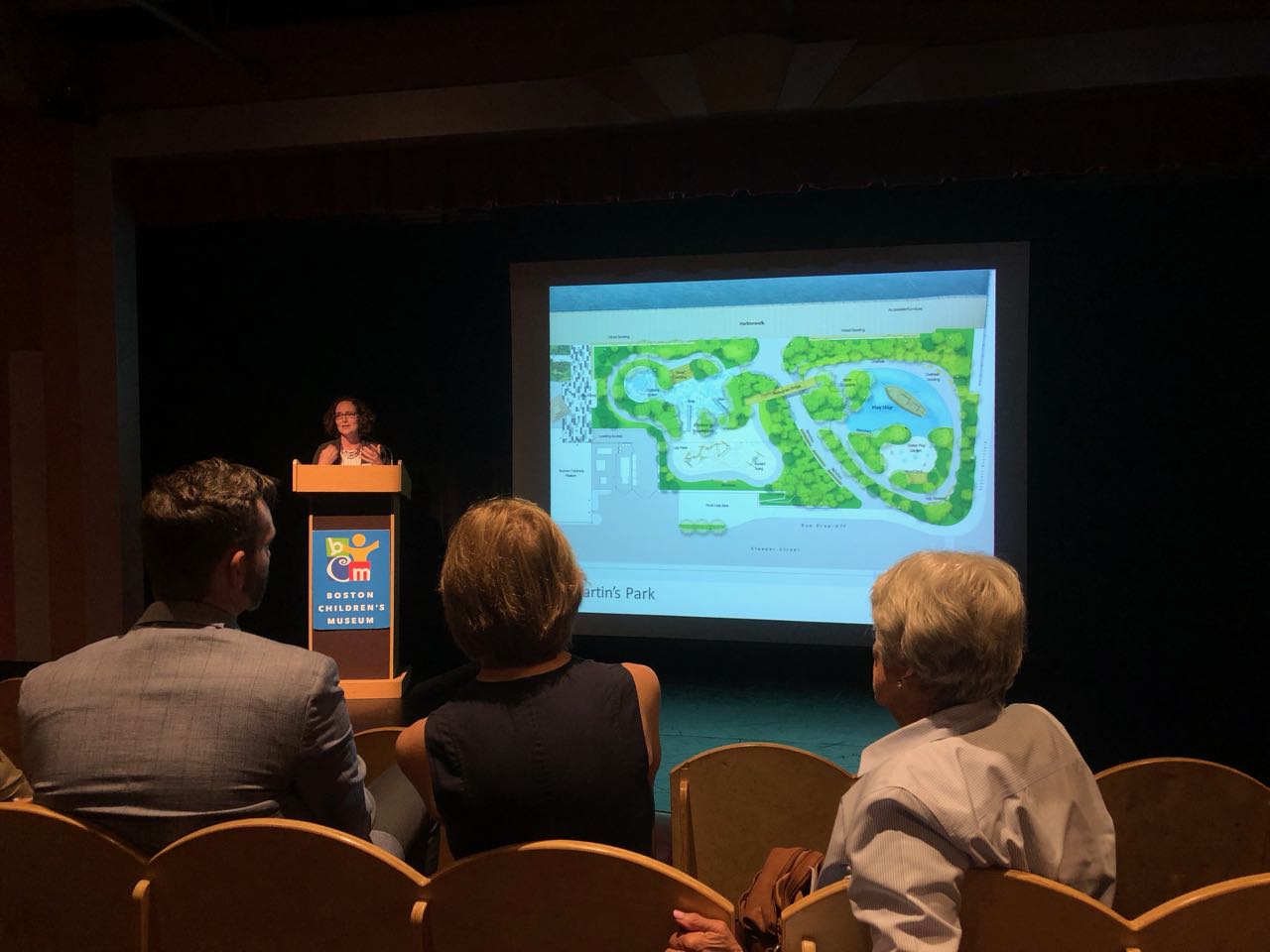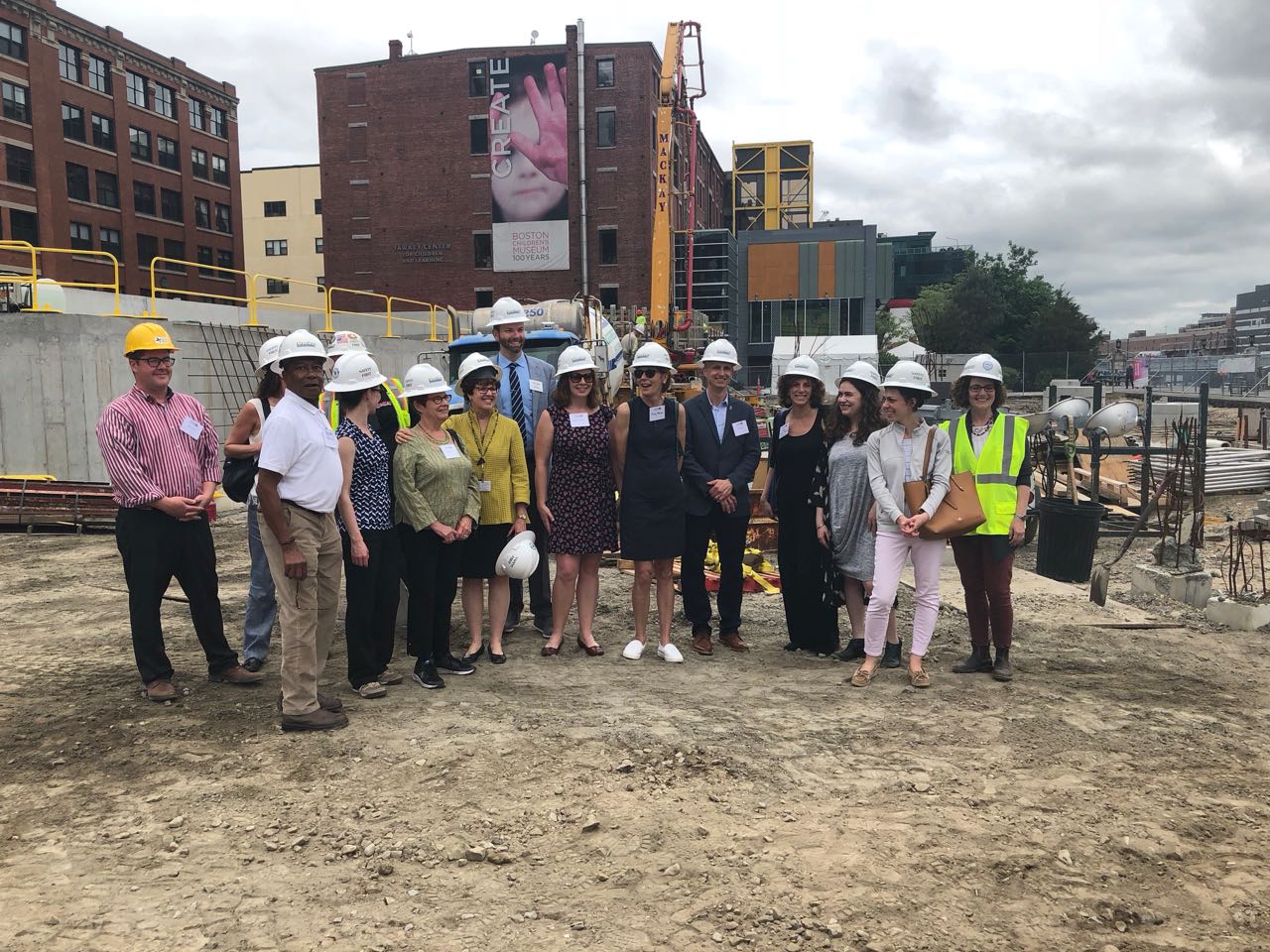Building - and preserving - an inclusive gift to the city
Fundraising continues to ensure that a new city playspace will shine for years to come
By Ted McEnroe, Director of External Communications
On a muggy Friday, about 20 Boston Foundation staff, donors and friends met at the Boston Children’s Museum for a tour of what promises to be a beautiful tribute to the youngest victim of the Boston Marathon bombing: 8-year-old Martin Richard.
Martin’s Park, as it will be known, is slowly emerging from the dust and dirt of heavy construction - the realization of a vision and partnership between the Martin Richard Foundation, the Children’s Museum and the City of Boston. But while the park, a beautifully-designed, fully inclusive one-acre playspace next to the Children’s Museum is the product of one great collaboration, ensuring the Park is cared for in the future will require another one.
A design marvel
The group listened as Bill Richard, Martin’s father, laid out the vision and process of creating what formally is to be known as Martin’s Park at the Smith Family Waterfront. The family was inspired by another inclusive playspace built after the Marathon bombing, Thomas M. Menino Park, across from Spaulding Rehabilitation Hospital where many of those injured in the bombings worked to recover or adapt to their injuries. “We knew we wanted to do something substantial in Martin’s name,” Bill Richard said, but the initial expectation was perhaps a small park in the Dorchester neighborhood where the 8-year-old grew up. Richard said city officials offered up a different solution. "Chris (Cook, the city's Commissioner of Parks and Recreation) rolled out a map and asked, 'Where do you want it?'” The Richards asked about the plot near the museum, and ended up working in partnership with the city to make the park a reality. As Bill Richard describes it, “The museum will be the park’s front door, and the park will be the museum’s backyard.”
Long-Term Needs
But like any outdoor project, the beauty and brilliance of the park’s design will only be sustained as long as it is cared for. So even as they were raising money for the construction of the park, the Richards began looking for support for park maintenance. The Friends of Martin’s Park launched a $5 million fundraising campaign to endow maintenance for the 1-acre space, which in addition to the custom-designed equipment will feature a wide range of trees and plants to create an oasis in the bustling Seaport.
The funds will be used for upkeep of the park, which sits on city-owned land, in perpetuity. The City, for its part, will staff the park with a full-time horticulturalist in addition to the city parks crews who will tend the plants and greenspace. Decisions on park maintenance and needs will be made by a board including members of the Friends of Martin’s Park and the Children’s Museum, with the city Parks Commissioner serving in an ex officio capacity.
For the Richards, it’s a way to help make sure the park continues to live up to its promise of safe, inclusive play for children throughout the region. It’s also a potential model for public-private partnerships to come. “It’s a great blueprint for the future of open space development on the waterfront,” said Cook.
Access to everyone - Play for all
The tour demonstrated the thoughtfulness with which designers have accounted for every detail to ensure that the play structures are safe and accessible to all children. Every structure to be included in the park, from the custom ship structure in the “North Playground” for younger children, to the fully-accessible timber maze in the “South Playground” for older ones, was evaluated on five dimensions of inclusion, to ensure children of limited physical, social/emotional, sensory, cognitive and communication abilities would be able to enjoy the Park.
The design team has also incorporated regional plantings and even reutilized other materials - from timbers salvaged from Boston Harbor to exterior stone left over from the Boston Public Library’s Johnson Building renovation - to give the space greater connections to the natural environments of the city.
It’s an investment in the children of the city that makes sense today - now donors have the opportunity to ensure that the children will get the same magical experience tomorrow.
The Boston Foundation regularly arranges tours for donors to get a firsthand connection to the work of Greater Boston's most innovative nonprofits. To learn more about how you can partner with us to enhance your philanthropy, visit tbf.org/donors.



